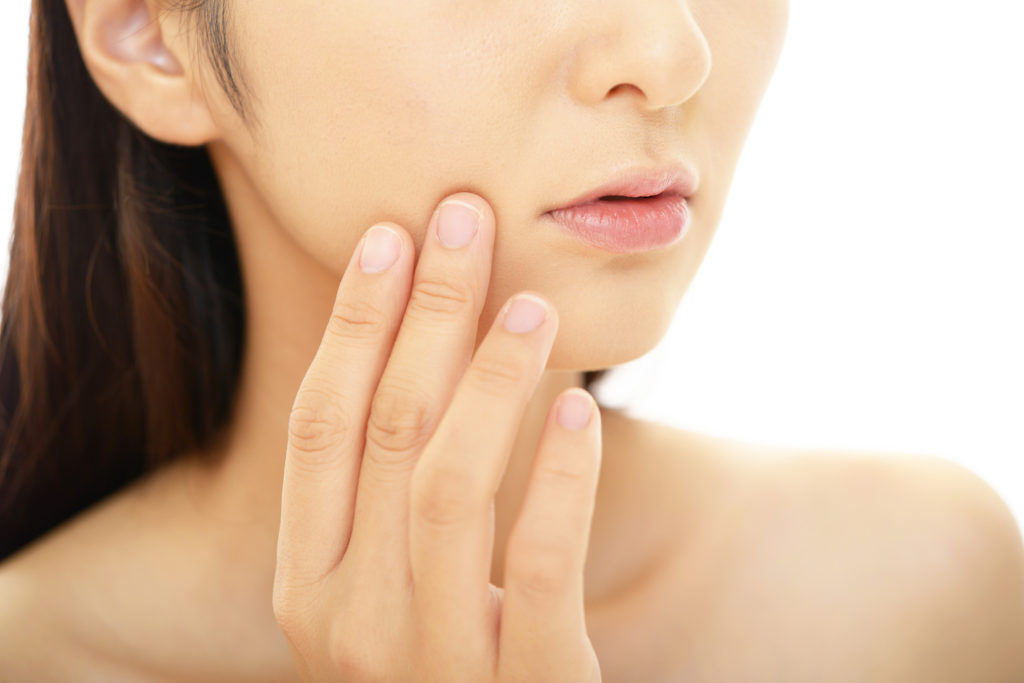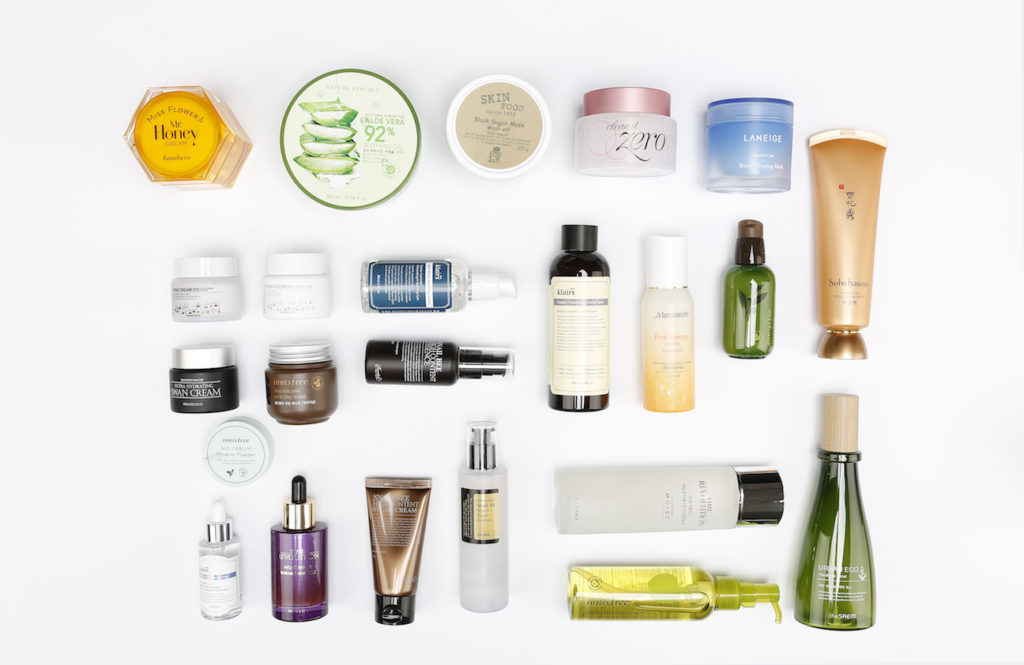Whether you’re stressed out or breaking out, these are all signs that maybe you need a little K-beauty love in your life. Find out why.
K-beauty is a growing global phenomenon — a disproportionately dominant, multi-billion dollar industry out of a country that would fit in the area between Los Angeles and San Francisco. It seems the entire country is geared towards researching, producing, marketing, and exporting beauty, and judging from their influence on Western cosmetic brands and trends, they’re pretty dang good at it. After all, K-beauty, in its home country, is a nationwide obsession — an integral part of a cultural fabric that values health, wellbeing, skincare, and outward appearance as a reflection of one’s work ethic — indeed, even moral fiber.
So it makes sense that K-beauty fans around the world are rabid, perhaps even obsessed. They’re not just buying and wearing K-beauty. They’re talking about it, they’re researching it, they’re sharing it — they’re Instagramming it every single day, for goodness’ sake. (Hundreds of thousands of less-than-well-lit snaps of rows of beauty products litter the social media site, many with voluminous descriptions of that evening’s skincare routine.)
Why has K-beauty struck such a chord worldwide? I’m sure it’s a perfect storm of a number of factors — economic, cultural — worthy of a doctoral thesis, but let me posit another theory. I believe K-beauty resonates with so many because K-beauty isn’t just about looking good — it’s about feeling good. It’s about taking care of you. It’s about making yourself better. It’s about making your skin work better. It’s about bringing out the best you, not striving for some random beauty standard. And best of all, all this is completely achievable without breaking the bank.
So if you (or your skin) have been feeling less than stellar lately, check out this list of five reasons why you just may need K-beauty.
1. Your skin is red, raw, and dehydrated
I’ve always been diligent about taking care of my skin, poring over articles in teen magazines about banishing blemishes with Sea Breeze and Clearasil. (If you don’t know what those are, ask an aunt or your mom pronto.) Of course, what I didn’t know then is that I was killing my skin with alcohol-laden toners and drying acne medication. It seems that the American standard for skincare always focused on that squeaky clean feeling, banishing every last trace of oil and dirt, and to some extent, that philosophy continues today. Exfoliation seems to be a national obsession these days, what with facial scrubs, glycolic acid peels, and sonic cleansing brushes a must-have on every vanity.
And while exfoliants, whether chemical or physical, definitely help boost skin cell turnover and give you a glow few other products can, many of us are overdoing it, resulting in a compromised skin barrier that leaves us red, raw, sensitive, and dehydrated. It’s almost like we want to beat our skin into submission.
Korean skincare, on the other hand, has always been about babying the skin. The multi-step skincare regimen arose out of the concept of gradually and gently introducing to our skin lighter textures to heavier ones so as to not “shock” the skin. It’s all about a healthy skin barrier — making sure not to over-exfoliate and bolstering the normal function of the skin so that it can do what it is meant to do: protect itself from external aggressors like bacteria, UV rays, and pollution, and keep the good stuff in, like water and lipids.
To that end, hydration is the focus of a Korean skincare regimen. If your skin’s moisture balance is off, its barrier is compromised, and your skin can’t handle all the other stuff you put on your face — potent ingredients targeting wrinkles, acne, and hyperpigmentation. In fact, those ingredients may end up irritating your skin, leading to inflammation and even more wrinkles, acne, and hyperpigmentation.
So come to the light. There’s no need to lurk in the dark side. K-beauty can help you.

2. You’re breaking out
This is a corollary to reason #1 above. Our skin was made to resist bacteria and other external invaders. The problem is that our skin barrier is weakened thanks to an increase in environmental pollution, UV rays, and yes, even our own overzealousness.
Acne is generally caused by a perfect storm of a few factors: overproduction of sebum, bacteria (specifically P. acnes), a buildup of dead skin, and hormones. Eliminate one of these factors and your chances of a breakout diminish. So here’s where K-beauty can help you.
- Hydration: When we dry out our skin through harsh SLS cleansers, over-exfoliation, or not enough hydration, our skin will respond by overproducing sebum. This is true even for oily skin types — we need both oil (sebum) and water (moisture) for the healthy functioning of our skin. You can have oily skin and still have dehydrated skin. So incorporate a hydrating serum and a lightweight, non-pore-clogging moisturizer into your routine.
- Gentle exfoliation: K-beauty is not opposed to exfoliation. After all, Koreans are devoted to their mogyoktang (traditional bathhouses) where they get scrubbed down with a rough, red mitt that made Conan O’Brien cry. But Korean exfoliation for the face is gentler, less frequent (think twice a month), and often done through gommage peeling gels or powder exfoliants.
- Even gentler ingredients: When I first started my foray into K-beauty, I was really surprised that there was little to no benzoyl peroxide or the BHA salicylic acid to be found. Instead, popular brands like Leejiham and COSRX (renown for their excellent but super gentle line of acne products that I’m personally obsessed with) rely on anti-inflammatory Centella asiatica extract, antibacterial propolis and tea tree extract, and betaine salicylate (a milder version of salicylic acid) to treat blemishes. How? By attacking bacteria and cleaning out pores without disrupting the skin barrier. (You see a theme here?)
3. You’re spending more time concealing and covering up than on skincare
Americans are big on concealers. It’s all about covering up flaws and hiding blemishes. This is in part due to a longstanding obsession with a matte face (cue the over-drying toner) because when your complexion can’t have any dimension or glow, every little discoloration’s gotta be covered up.
Yes, I know, Koreans used to be into the matte face as well (circa 1980s). But in recent years, it’s been all about the dewy (sometimes overly dewy, but dewy nonetheless). And with a dewy look, light reflects off your face just so, so that you don’t have to fret over every little blemish and imperfection. It’s less about allover, seamless (read: mask-like) coverage and more about healthy, glowing skin.
How to get this kind of skin? No, it’s not a miracle foundation that K-beauty has invented (though cushion compacts come pretty close). It’s about starting your makeup at the skincare level — cleansing, toning, hydrating. It’s why makeup artists at fashion runway shows in New York, Paris, and Milan now start their makeup look on models not with the perfect concealer but with a sheet mask or a soothing moisturizer and a quick facial massage. Because Korean women know that a plumped, hydrated base is the perfect foundation for any makeup look.

4. You’re broke
Early in my K-beauty days, I would cast a stink eye on any skincare product that cost less than $20 and wasn’t a lip balm or a sheet mask. (OK, let’s be honest, it was more like $40.) I mean, really, I thought, if you’re that cheap, you couldn’t possibly be good. Of course, this was my Western-beauty-marketing-brainwashed mind talking. I’d been raised on Estée Lauder, after all, thanks to my skincare-obsessed immigrant mother, who grew up in Korea at a time when the country had a GDP lower than Guatemala and The Democratic Republic of the Congo.
So imagine my surprise when I discovered not one, not two, but a whole country full of products that not only did amazing things for my skin — often comparable or better than my Western products — but were sometimes a tenth of the cost of what I was paying at department stores. My current favorite morning cleanser? About 10 bucks. My go-to moisturizer for my oily T-zone. Also $10. A great essence with loads of snail mucin? Less than $20.
Now that’s not to say all of K-beauty is that affordable; there are plenty of K-beauty products with prices comparable to Western brands. But if you’ve been wanting to delve into a really good, effective skincare regimen but have limited funds, then K-beauty is for you.
5. You’re stressed out
Modern life is not easy. We may not be running from saber tooth tigers anymore, but our stress levels are more chronic. Tight schedules, deadlines, traffic, working mom guilt, keeping up with the Joneses — it all results in a constant undercurrent of the stress-response hormone cortisol slowly damaging our bodies, our mental health, and of course, our skin. It’s no wonder skin conditions like eczema, rosacea, and adult acne are on the rise. Our bodies are just not programmed to deal with constant and consistent stress.
But how to de-stress? We don’t have time for an hour-long yoga session or a trip to the spa. It’s stressful just trying to squeeze in time to de-stress!
That’s where K-beauty comes in. Because K-beauty is not just the products you put on your face. It’s the philosophy of self-care, of taking the time to pamper your skin, to de-compress and de-stress. A multi-step regimen forces you to slow down, to focus on yourself and on the condition of your skin. It may be the only two times in your day where you have to take care of yourself.
Ready to give K-beauty a go? Don’t be intimidated! We make it easy for you with our essential K-beauty kit for newbies and the 5 pillars of K-beauty that'll help you understand that K-beauty is more than just the products on your vanity.
Ready to go deeper? Check out the the typical multi-step Korean skincare routine.
When did you realize that you need K-beauty? What were the signs for you? Let's talk in the comments below!
Loading...